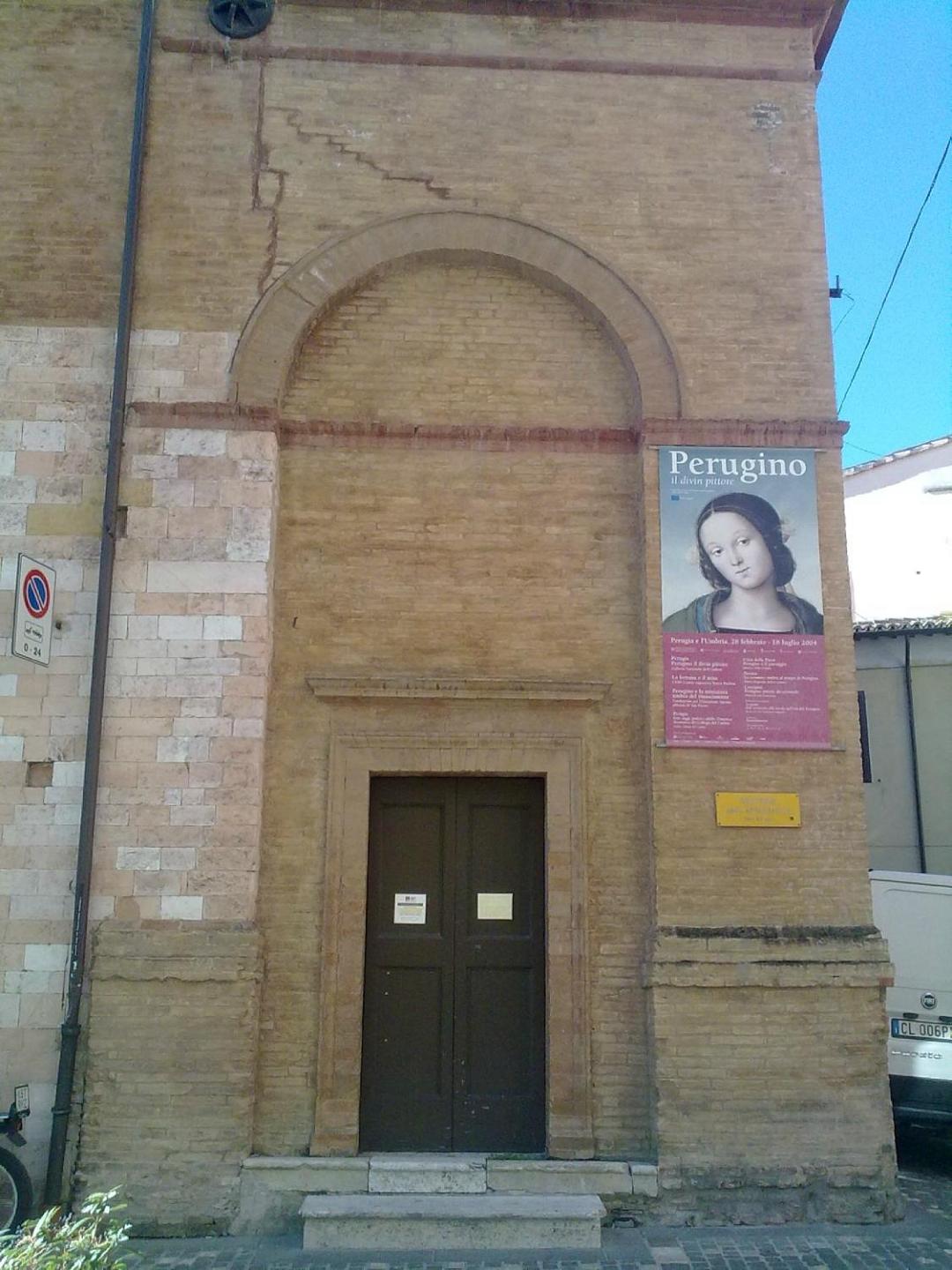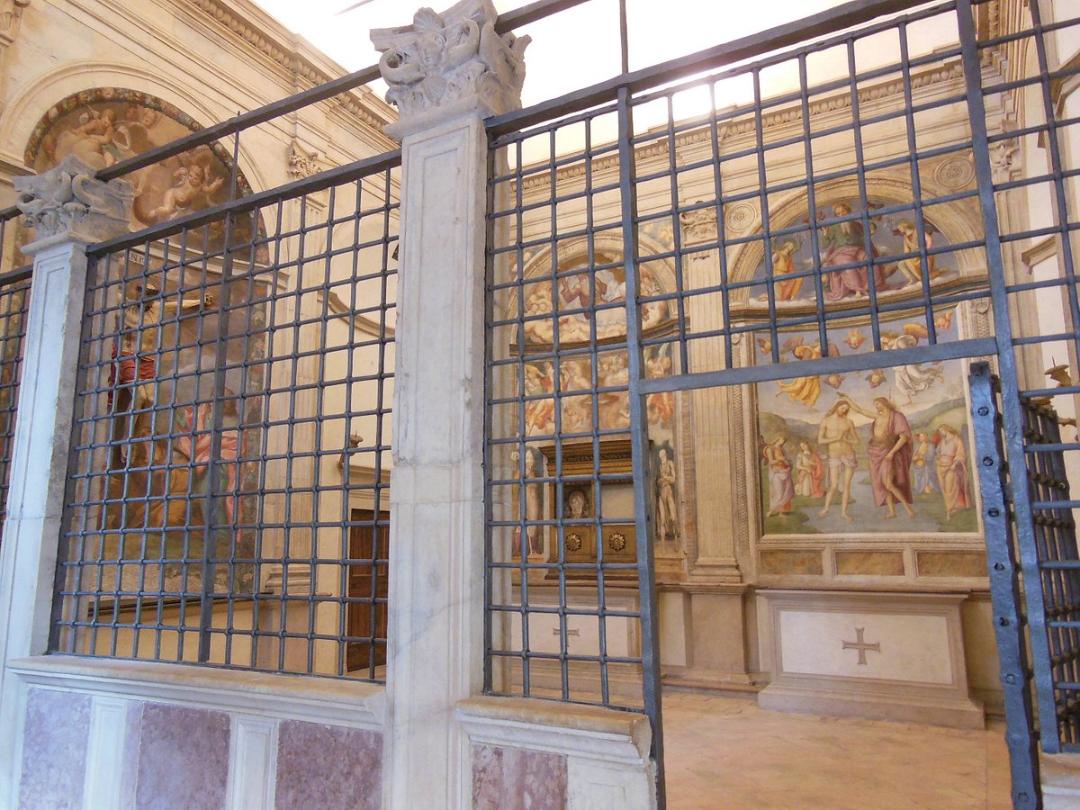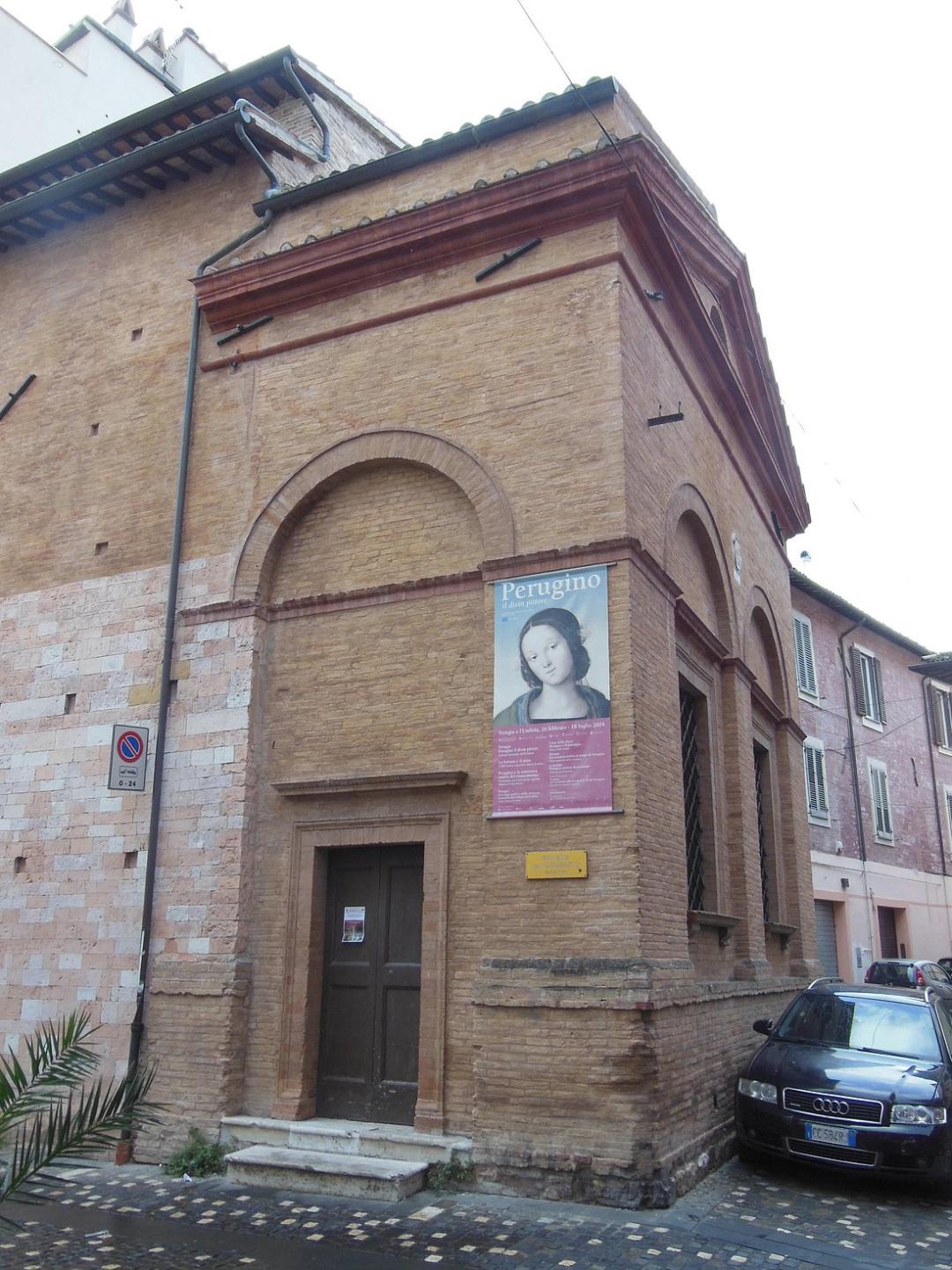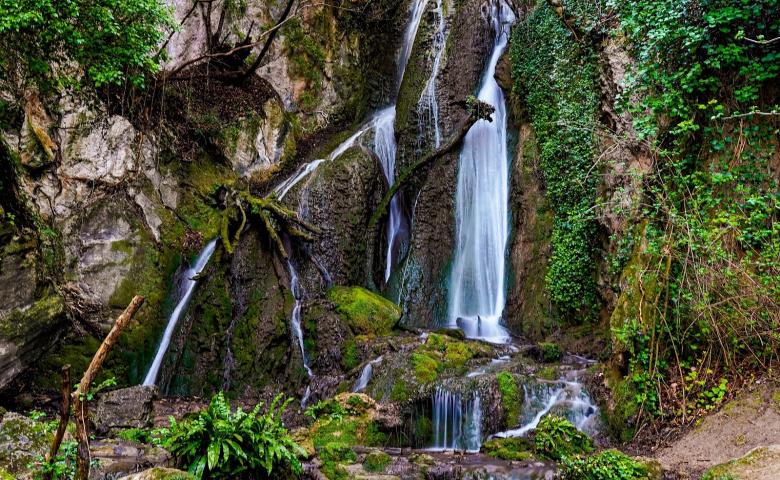Altar of the Annunciation
Inside an elegant, finely crafted wooden aedicule, the half-length image is the focus of the miraculous event: the Annunciation. In the background is a fresco dated 1575, attributed to Giovanni Antonio Pandolfi of Pesaro or to Ercole Ramazzani of Arcevia, depicting the Holy Spirit among angels and, below, St. Feliciano and the blessed Pietro Crisci; in the lunette, the Eternal Father among cherubs.
Altar of St. John the Baptist
It was decorated by Perugino, probably around 1508, with a fresco representing the Baptism of Christ, the illustrious prototype of which is the one painted by the same painter in 1480, in the Sistine Chapel in Rome. The subject of the work, as dear as that of the Nativity, refers to the Baptism of Christ in Perugia,part of the Polyptych of Sant’Agostino preserved in the National Gallery of Umbria) and to the Baptism of Città della Pieve (inside the Cathedral of Saints Gervasio and Protasio).
The composition is typical of the Perugino’s late phase: two angels in the air, surrounded by cherubs, a motif that appears in almost all of the painter’s frescoes, allow the dove of the Holy Spirit to pass in the centre. On the river banks four other angels, two in prayer and two kneeling, flank the heart of the composition, Christ and St. John. The latter dressed in belted purple cloak, pours water from a small container onto the praying Christ. The two central figures, far from strong and rude archetypes, here seem to dance on the water and the very sweet, almost idealized features, accompanied by soft colours, typical of Perugino’s late phase, make the composition, a masterpiece of perspective, a perfect Renaissance painting.
In this respect, the fresco is one of the most emblematic works of Perugino’s “clear manner”, displaying his exceptional delicacy and lightness of hand and with figures and objects immersed in an evocative atmospheric vaporosity. The setting is probably a glimpse of the countryside around Foligno: in this case the Jordan river is represented by the Topino river. Above the fresco there is a lunette, also by Perugino, depicting the Eternal father between two adoring angels. The work was commissioned by Giovan Battista Merganti, as evidenced by the inscription placed under the lunette and the family crests in the upper left.
Altar of the Crucifix
Work of a local artist, the Crucifix made of plastered canvas has a fresco of the Madonna with Mary Magdalene and St. John on the sides; in the lunette are weeping angels. The fresco was recently attributed to the Frenchman Noël Quillerier who painted it in 1621, after the original altars of St. Michael and St. Roch were removed.
Altar of the Madonna of Loreto
Now empty, it historically housed the canvas of the Madonna di Loreto, which was transferred to the Civic Art Gallery.
Altar of the Deposition
Located in the sacristy, it depicts the Lamentation over the dead Christ. It is a fairly complex pyramidal composition, with Christ sitting on a rock, the Madonna, the Magdalene and St. John the Evangelist. On the left of the group a rocky wall is depicted in which the open sepulchre with Nicodemus and an angel. The fresco, now very deteriorated, has in the past been attributed to Raphael, Lorenzo Lotto and Andrea Mantegna. Current criticism is oriented towards the names of Giannicola di Paolo, the Friulian Pordenone and the Pavese Benedetto di mastro Gaspare (1511).
Entrance tickets for the Oratory can be purchased at Palazzo Trinci.
For entrance times:
http://www.museifoligno.it/i-musei/oratorio-della-nunziatella
Sources:
Pietro Perugino e il Santuario della Nunziatella a Foligno edited by Giordana Benazzi, Foligno, Orfini Numeister, 2005
























.jpg/9c821287-b9ac-2175-7491-002f9032c42f?width=1920)





.jpeg/26712e88-9665-3ae2-a85e-3bd2b38b8a93?width=780)



